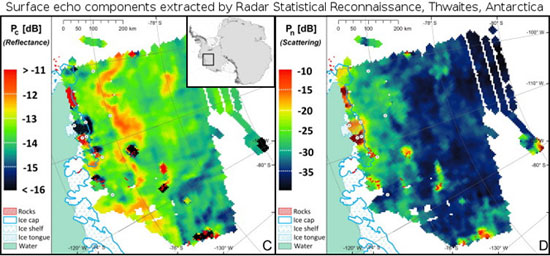Leveraging Radar Sounding with Surface Reconnaissance:
From Antarctic Science to Planetary Landing Sites
By:
Cyril Grima
UTIG
Join us for coffee beginning at 10:00 a.m.
Click for a Live Broadcast.

Abstract
Radar sounders are active remote sensing instruments whose signal can penetrate through the ground down to several kilometers in icy environments. While the radar plateform is moving horizontally, the recording of radio reflections from buried geophysical interfaces does provide a vertical cross-section (i.e. radargram) of the subsurface structure and geometry.
Radar sounders are deployed on airborne plateforms over terrestrial polar terrains and planetary spacecrafts orbiting the Moon and Mars. UTIG is the prime investigator of a radar concept for the exploration of the jovian moon Europa to search for its hidden subsurface ocean.
However, while the radar sounders are commonly used for their capability to retrieve the geometry of subsurface geologic structures, the amount of power reflected by the surface also contains precious informations on its roughness and composition. I will present a reflectometry technique, the Radar Statistical Reconnaissance (RSR), that has been matured over the last two years at UTIG to extract these properties from the surface echo.
Some applications in Antarctica with the UTIG's High Capability Radar Sounder (HiCARS) demonstrate the RSR capabilities in terms of surface composition assessment, roughness inversion, and near-surface liquid phase detection. The RSR is especially robust in deriving the surface snow density over large regions, promising to increase the accuracy of the Antarctic surface mass balance (SMB) models. Surface density is a measurement of its cohesiveness and load-bearing capabilities, while roughness is a proxy for blocks distribution and sizes. Those two properties are crucial in assessing the safety of potential landing sites for planetary crafts. I will show how the RSR can contribute in a near-future to the selection of Martian landing sites for the NASA's Insight Lander and the 2020 Mars rover. These capabilities can be extended to site reconnaissance on Europa that is a NASA's programmatic goal for a follow-on lander.




